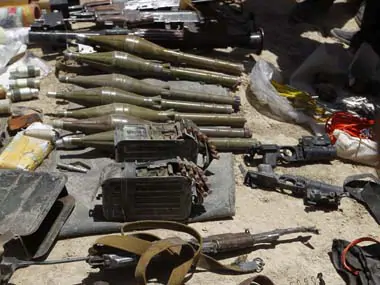
SOURCE: FIRST POST
The article Indian Army concerns over quality control, weekly ammunition – related accidents: Why Centre is pushing to corporatize OFB published on 23 May 2020 makes a number of sweeping statements which are incorrect and based on an understanding that is incomplete. The article is misleading and unrepresentative of the truth.
The article specifically mentions the frequency of accidents, poor quality, irregular supplies, 130 mm ammunition, BMCS, Mine NMM 14 and 40mm UBGL ammunition. The contention that officers of the Ordnance Factory Board (OFB) did not attend the meeting on 14 February following an accident in Rajasthan is incorrect. The meeting was attended by a senior officer of the OFB and detailed discussions were held regarding the methodology of revalidation which is to be completed by June 2020.
The issue of poor quality is incorrect as is evident from the system of early user exploitation introduced in 2013, wherein 1 percent of each lot is subjected to firing in an attempt to identify manufacturing defects. The results of this system have demonstrated a success rate of 99.8 percent which is world-class.
The ability of the ordnance factories to produce world-class ammunition is also established by the placement of repeat export orders of ammunition supplied under self- certification.
The indication in the article that the ordnance factories get away with substandard products as the army is solely dependant on them for the supply of ammunition is incorrect. The ammunition has to meet the quality assurance (QA) plans approved by the QA agency which are based on documents supplied by the original equipment manufacturer (OEM).
Related to the alleged poor quality of ammunition is the issue of accidents. Defect investigation of accidents is undertaken by multi-agency technical teams where the army is also represented. Recommendations of these committees, some of which are even more stringent than those of the OEMs such as 100 percent X-ray of ammunition and chrome passivation of brass cartridges, have been implemented.
Accidents, however, can have a multiplicity of causes which may also relate to aspects of weapon design, deviation from usage protocols, maintenance of weapons, and storage conditions of the ammunition. OFB has always requested for the adoption of a holistic approach which is yet to be fully implemented.
The article specifically refers to 130 mm ammunition and the issue of dynamic balancing. Dynamic balancing has been implemented and a number of lots have been accepted by the QA agency after proof firing. Lots of ammunition have been produced under controlled conditions and strict implementation of all the recommendations of the defect investigation committees.
Recurrence of accidents after implementation of all the recommendations of these committees indicate a limited understanding of the underlying causes of the accidents and call for a holistic approach to such an exercise.
Regarding the comments pertaining to the development of ammunition, OFB would like to state that it has entered into the area of design only since 2006 and has had a number of notable successes.
Delays in the development occur due to delays in user evaluation trials, often due to infrastructural constraints. In some cases, there have been delays of over a decade. Unrealistic specifications, a fact admitted to recently by the top echelons of the army, and mid-stream alterations of specifications are some of the other usual causes.
Any change is specifications including those in packaging have to be subjected to the same rigorous process of user evaluation.
A reference was also made to the Bi-Modular Charge System (BMCS) manufactured by the Ordnance Factory Nalanda. The BMCS is a success story of indigenisation under the Make In India policy where after the initial teething troubles were settled by a joint committee, BMCS is being regularly supplied to the Indian Army at a price which is well below the imported price.
At this point, it would be well worth mentioning that the ordnance factories have an established tradition of indigenisation with an overall indigenous content of over 90 percent in its products and 97 percent in ammunition.
The allegation pertaining to the inability to supply anti-tank mines is not based on an understanding of facts. These mines have not been designed by the ordnance factories. Multiple reviews by all stakeholders have been unable to remove the design deficiencies and the mines have been unable to meet the acceptance criteria for shelf life.
Shortage of Mine NMM-14 has been alluded to. The delay in manufacture occurred precisely because they were not “relatively simple” to manufacture as ignorantly asserted in the article. Indigenous vendors were unable to supply mine bodies and supplies have only recently stabilised after the successful multi-pronged vendor development strategy undertaken by the Ordnance Factory Chandrapur.
The 40mm UBGL ammunition is not the main weapon of T-72/T-90 tanks as has been incorrectly mentioned in the article. Several variants of 40 mm ammunition have been developed by the Ammunition Factory Khadki and successfully supplied to customers. The user evaluation trials by the army are underway.
Statements relating to shortages of ammunition are also incorrect. Adequate stocks exist with the army for all the calibres of ammunition regularly indented by the army. All short term demand surges are also being met.
Supply of spare parts is not erratic as claimed by the article as there is no uniform demand for spare parts.
The author is Deputy Director General, Ordnance Factory Board.
https://defencenewsofindia.com/casting-doubt-on-standards-of-quality-control-blaming-ordnance-factories-alone-for-ammunition-related-accidents-unfair/






